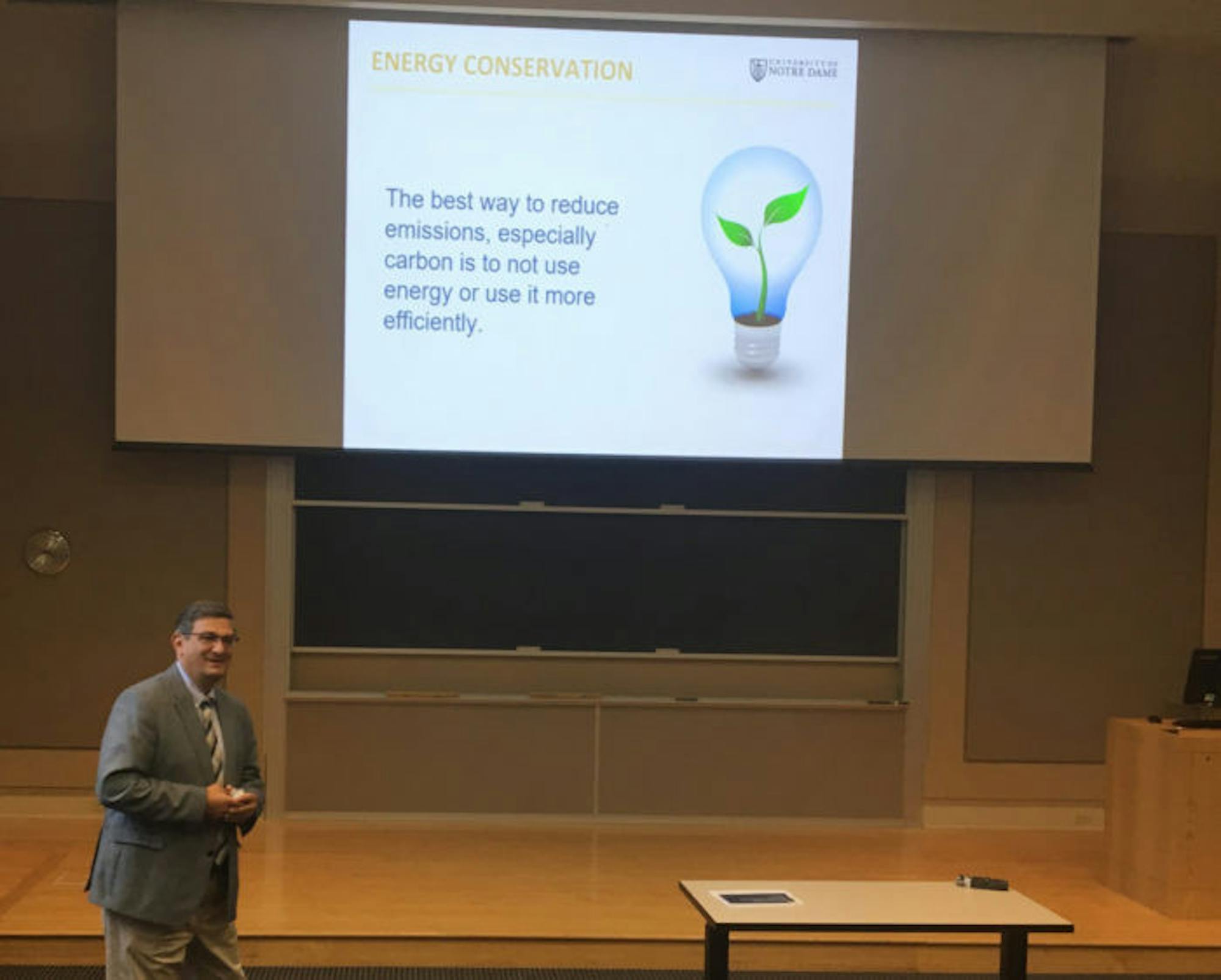Notre Dame’s coal pile is dwindling as it focuses on taking advantage of other fuel sources and works towards its goal of stopping coal combustion by the end of 2020.
Assistant vice president for utilities and maintenance Paul Kempf gave updates on the University’s progress towards this goal during a presentation Tuesday afternoon. During the talk, he focused on Notre Dame’s hydroelectric plant, purchased power, geothermal fields and a number of other strategies the University is employing to work on carbon reduction.

Natalie Weber
Paul Kempf, ND assistant vice president for utilities and maintenance, speaks on the University's energy efforts on Tuesday in Bond Hall.
Kempf said efforts trace back to 2010 when the University decided to make energy a main focus of its sustainability initiatives. Working towards carbon reduction, Notre Dame has depended on a number of strategies, Kempf said.
“I think our perspective was that we wanted to take advantage of the assets the University already owned, and that we had invested in, and get our value out of those, but at the same time reduce in carbon,” he said. “And like a good investment portfolio, diversification is always a good practice.”
One such way the University plans to reduce its carbon output is through the construction of a new hydroelectric plant in South Bend, for which the University broke ground on Aug. 19.
“Hydro will actually produce, based on today’s usage, 7% of electricity we use on campus, and it will reduce our carbon foot by 9,700 tons,” Kempf said. “Our carbon footprint today is probably about 190,000 pounds. So it will reduce our carbon footprint by 5 or 6%. Not a huge number. But there isn’t a home run here, folks, there are a lot of little projects that go together to reduce their carbon footprint.”
Kempf also explained how the University’s East Plant — which houses the geothermal fields’ mechanical equipment, water chillers and a thermal energy storage tank — functions. He said the water chillers work at night — a time when power is cheaper, or the University has excess power because of a lower energy demand. Using this load shifting, Notre Dame has been able to increase its energy efficiency, Kempf said.
The University also uses energy from a solar array it owns near the local airport. According to the South Bend Tribune, Notre Dame estimated the array would reduce its carbon dioxide emissions by 2,000 tons over the course of about 20 years.
“Our plan was, we weren’t going to try to produce more solar energy than we needed for [the] facility,” Kempf said. “We really wanted to be able to have some amount of power we bought all the time and have the full benefit of the solar array to the facility.”
Notre Dame also purchases about half of its electricity from Indiana Michigan Power, Kempf said.
“What they do on their side of the ledger matters to us as well,” he said. “They have a partner on that side that’s doing things to try to reduce their carbon footprint.”
As a whole, the University is continuing to look for more cost-effective and carbon-reductive strategies, Kempf said.
“There’s a whole series of different projects, some of those ones that I just mentioned,” he said. “So we have a roadmap [but] we’re always looking to see if we can make a better roadmap.”









